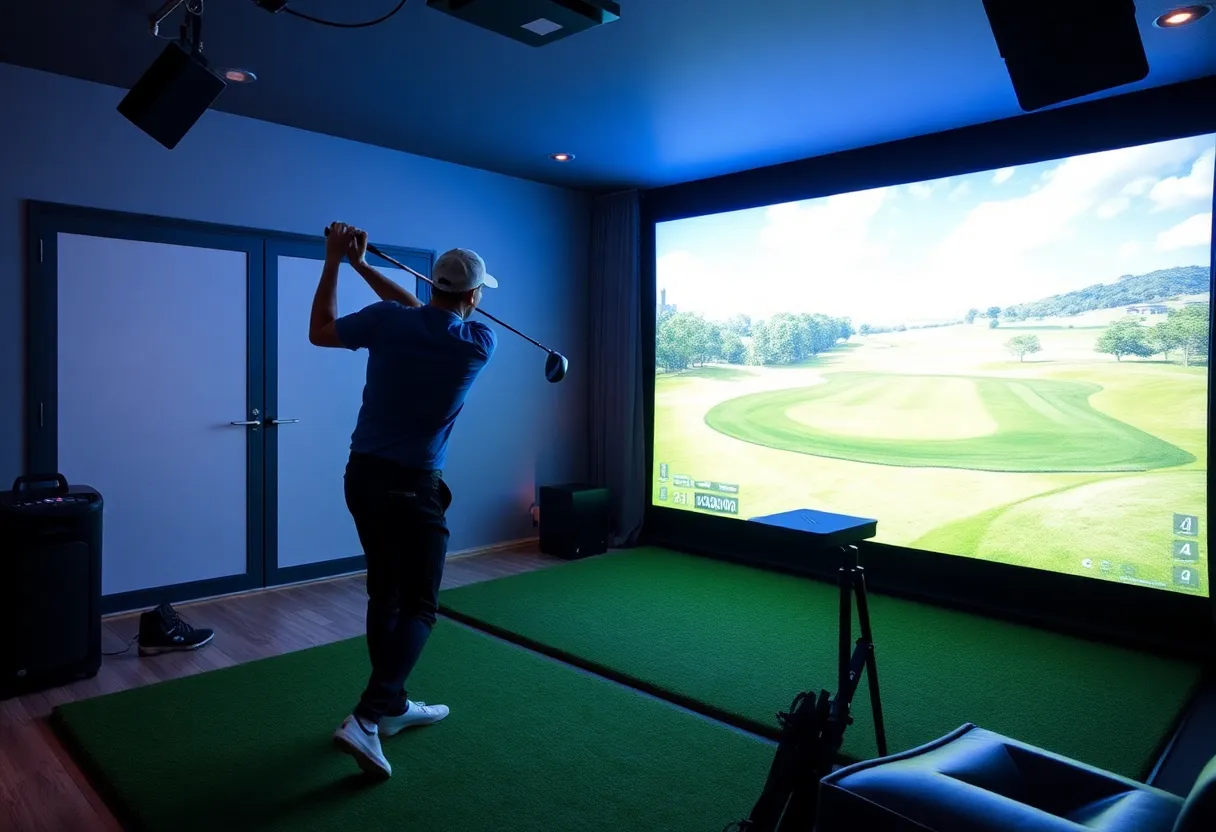Virtual Golf Simulators: How Realistic Are They?
The rise of technology has significantly transformed the world of sports, and golf is no exception. Virtual golf simulators have gained popularity among golf enthusiasts, offering an immersive experience that mimics real-world play. But how realistic are these systems? This article delves into the factors influencing the realism of virtual golf simulators, providing insights into technology, design, performance, and user experience.
Understanding Virtual Golf Simulators
Virtual golf simulators are electronic systems that integrate hardware and software to simulate golf courses and gameplay. They use advanced technologies, including high-speed cameras, infrared sensors, and radar, to track the ball’s movement and provide feedback on various performance metrics.
Types of Virtual Golf Simulators
There are primarily two types of virtual golf simulators: indoor simulators and outdoor simulators. Indoor simulators are typically used in home settings, featuring compact setups suited for recreational players. Outdoor simulators are found on golf courses or driving ranges, offering a more expansive playing experience.
Indoor Simulators
Indoor setups often include a screen, projector, and impact sensors. These simulators are popular among hobbyists who want to practice their swing year-round, regardless of weather conditions.
Outdoor Simulators
Outdoor simulators provide a more realistic golf experience, allowing players to hit actual golf balls on a vast field. Players can play on simulated famous courses while enjoying the physical aspect of golf.
Key Components of Realism
The realism of virtual golf simulators depends on several crucial components: precision, course design, and user interaction.
Precision and Tracking
One of the most vital features that enhance realism is the accuracy with which the simulator tracks ball movement. Most advanced simulators employ high-speed camera systems or radar technology to measure various elements, such as swing speed, launch angle, and ball spin. This data is critical for generating realistic trajectories and distances.
Course Design and Environment
The virtual representation of golf courses is another area that significantly impacts realism. Premier simulators offer detailed graphical representations of renowned golf courses, replicating elements like terrain, hazards, and environmental conditions. The more intricate the design, the more immersive the experience becomes.
User Interaction and Feedback
Interactivity plays a substantial role in enhancing the realism of virtual golf simulators. Players should be able to engage with various settings, such as adjusting weather conditions or choosing different tee locations. Furthermore, real-time feedback on swings and putting techniques can help replicate the learning experience found on a physical course.
Comparing Virtual Golf Simulators to Real Golf
While virtual golf simulators offer a host of advantages, they also have limitations when compared to actual golf experiences. This section reviews some of the key differences.
Physical Experience
One significant distinction is the physical environment. Golfers miss the natural aspects of outdoor play, including wind, sunlight, and varying terrain. Although simulators can mimic some conditions, they can rarely replicate the full sensory experience.
Golfing Skills Development
Developing golfing skills can differ between virtual and real courses. Simulators can help in refining techniques, but players may struggle to replicate time-management or strategic navigation required in a physical setting. Additionally, swing mechanics can feel different when using real clubs versus virtual systems.
Technological Advances Enhancing Realism
Recent years have seen substantial advancements in technology that have improved the realism of virtual golf simulators.
High-Definition Graphics
Modern simulators now feature high-definition graphics, providing lifelike visuals. Users can experience stunning representations of landscapes and the details specific to real courses. This enhancement significantly improves user immersion.
Enhanced Data Analysis
Advanced data analytics tools have revolutionized how players analyze their performance. Many simulators provide detailed reports on swing analysis, club usage, and shot types. Such insights allow golfers to identify weaknesses and track their improvements over time.
Integration with Smart Devices
Some simulators now integrate with smartphones and tablets. This feature enables players to stream data, participate in competitions, and interact with communities worldwide. Additionally, virtual coaching is more accessible, providing tailored guidance.
User Experience and Satisfaction
Measuring user experience is crucial in evaluating the effectiveness of virtual golf simulators.
Player Engagement
User engagement is often high due to competitive elements. Many simulators offer features like multiplayer modes, tournaments, and leaderboards, encouraging players to stay motivated and improving their skills.
Realistic Practice Settings
Golfers can modify specific settings on simulators to create challenging practice environments that mirror the conditions of a real course. These tailored experiences are invaluable for honing the skills needed for actual play.
Feedback from the Golfing Community
Feedback from players often highlights the thrill and excitement of using virtual golf simulators. Many report significant improvements in their skills and enjoy the diversity of gameplay options available. However, some golfers remain skeptical about their effectiveness compared to traditional play.
Conclusion
Virtual golf simulators have made substantial improvements in realism over the years, offering a multifaceted experience that appeals to golfers of all levels. While they provide many benefits, including precise data analytics, interactive environments, and the ability to play virtually anywhere, they cannot wholly replicate the essence of traditional golf.
As technology continues to evolve, the gap between real golf and simulators may narrow, ultimately providing players with a more authentic experience. For now, they serve as excellent tools for practice, entertainment, and engagement in the world of golf.


